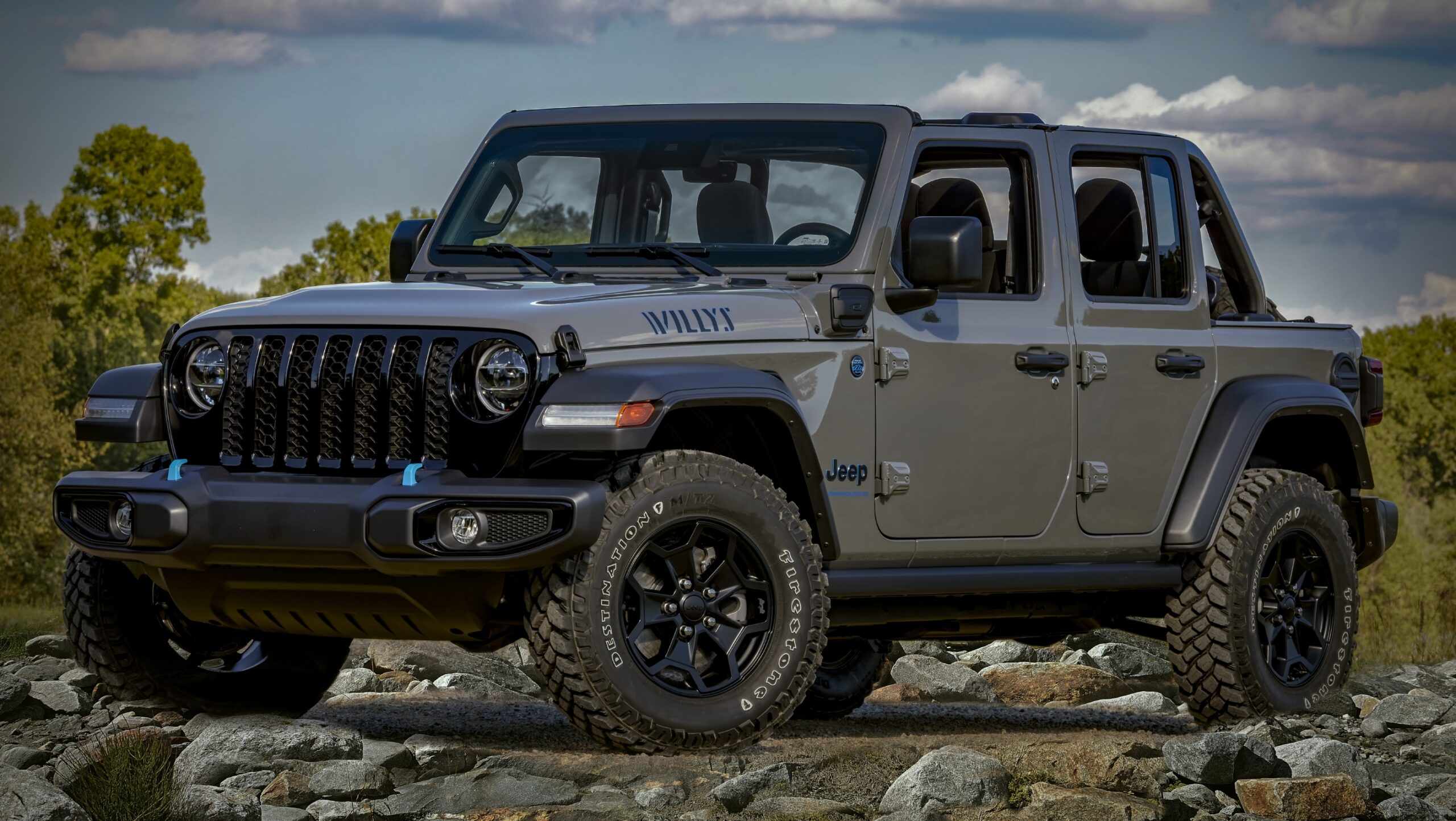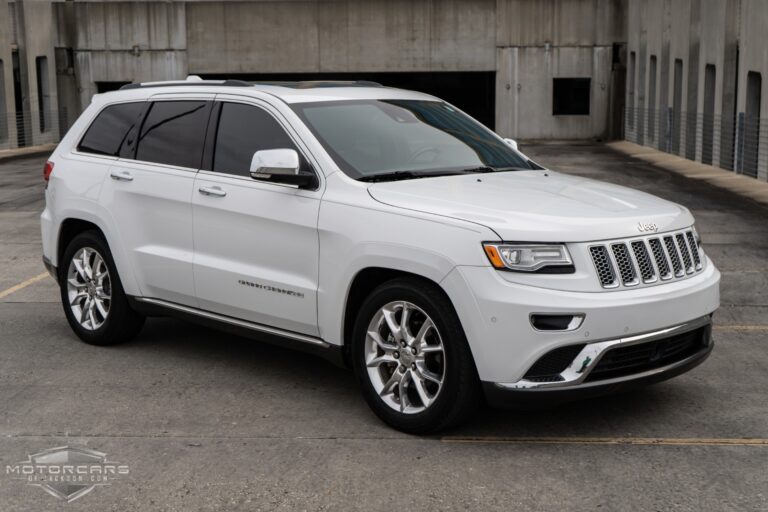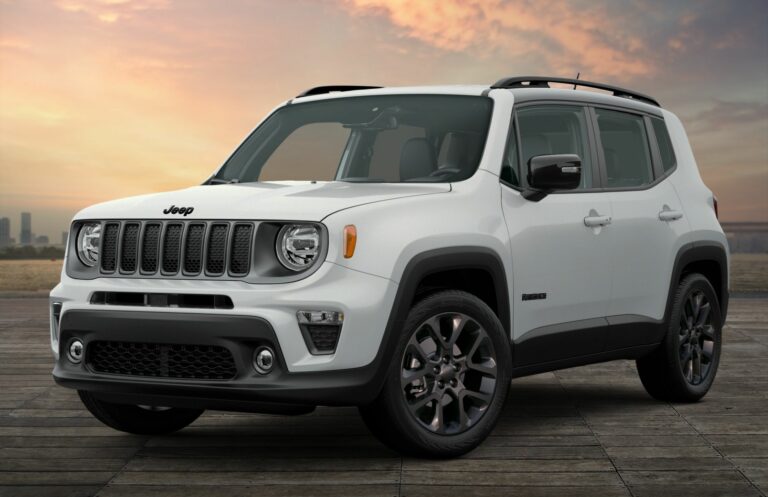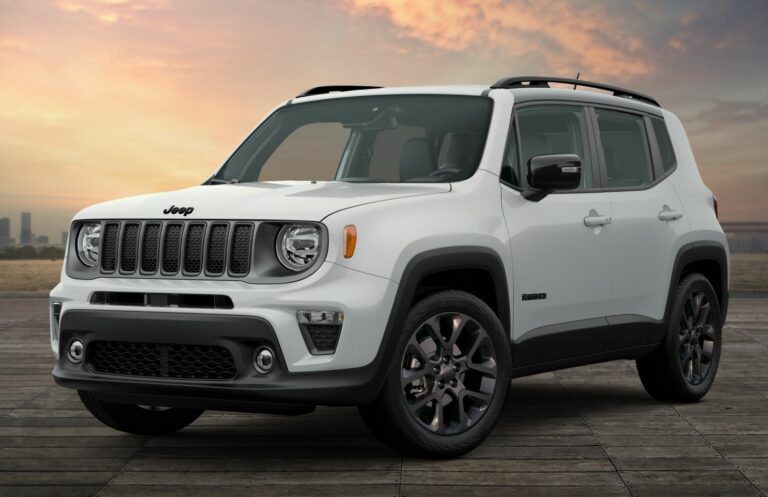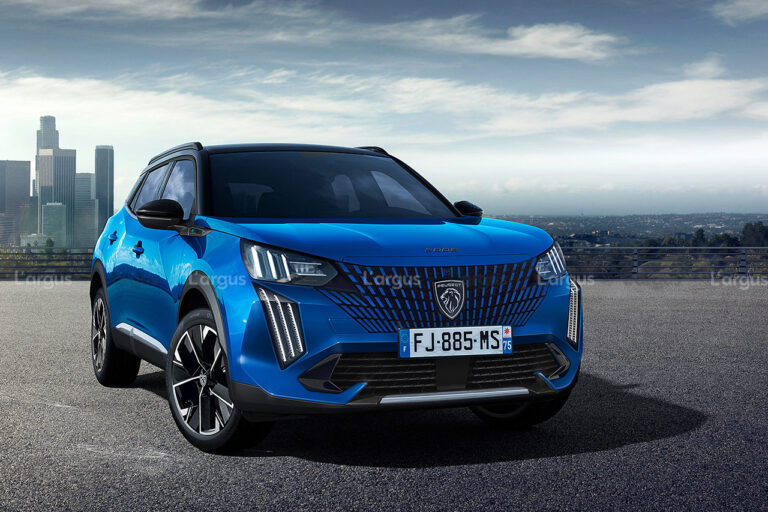Jeep Wrangler JK 2 Door With 35 Inch Tires: The Ultimate Guide to Capability and Style
Jeep Wrangler JK 2 Door With 35 Inch Tires: The Ultimate Guide to Capability and Style jeeps.truckstrend.com
The Jeep Wrangler JK, produced from 2007 to 2018, represents a pivotal era in the storied history of this iconic off-road vehicle. While the four-door Unlimited variant gained immense popularity, the classic two-door JK retained its nimble spirit and traditional Wrangler essence. For many enthusiasts, the pursuit of enhanced off-road prowess and a commanding aesthetic leads them to one significant modification: fitting their Jeep Wrangler JK 2 Door with 35-inch tires. This transformation elevates the vehicle from a capable stock performer to an imposing trail conqueror, ready to tackle more challenging terrain with improved ground clearance, traction, and an undeniably aggressive stance.
This comprehensive guide delves into every facet of running 35-inch tires on a Jeep Wrangler JK 2 Door, exploring the benefits, the essential modifications required, daily driving considerations, and the unparalleled off-road capabilities unlocked by this popular upgrade.
Jeep Wrangler JK 2 Door With 35 Inch Tires: The Ultimate Guide to Capability and Style
Why 35-Inch Tires on a JK 2-Door? Unlocking Potential
The decision to equip a Jeep Wrangler JK 2 Door with 35-inch tires is driven by a combination of practical benefits and aesthetic desires.
- Superior Ground Clearance: Larger tires directly translate to more ground clearance under the axles and differentials, which are typically the lowest points of a vehicle. This is crucial for clearing rocks, logs, and other obstacles on the trail without getting hung up.
- Enhanced Traction: The increased contact patch and often more aggressive tread patterns of 35-inch tires provide significantly better grip on loose surfaces like sand, mud, snow, and rocks, giving you confidence in challenging conditions.
- Improved Approach, Departure, and Breakover Angles: While primarily influenced by a lift kit, larger tires contribute to these critical off-road metrics by raising the vehicle’s body and allowing the tires to roll over obstacles rather than hitting them.
- Aggressive Aesthetics: There’s no denying the visual impact. A JK 2 Door on 35s looks purpose-built, rugged, and commands attention, perfectly embodying the spirit of a true off-road machine.
- Optimized Performance for Specific Trails: Many popular off-road trails and obstacles are designed with vehicles running 35-inch or larger tires in mind, making this size a de facto standard for serious enthusiasts.

Essential Modifications for a JK 2-Door with 35-Inch Tires
Simply bolting on 35-inch tires isn’t an option for a stock JK 2 Door. A series of integrated modifications are required to ensure proper fitment, safe operation, and optimal performance.
1. Lift Kit: The Foundation for Clearance
A lift kit is the absolute cornerstone for fitting 35-inch tires. For a JK 2 Door, a 2.5-inch to 3.5-inch suspension lift is generally recommended.

- Coil Spacers: An economical option, these spacers sit on top of your existing coil springs, providing lift without changing ride quality significantly. Best for light off-roading.
- Full Suspension Kits: These replace your stock coil springs, shocks, and often other components like control arms and track bars. They offer superior ride quality, articulation, and durability, especially for serious off-road use. Brands like TeraFlex, Old Man Emu, AEV, and Rough Country offer excellent options.
- Important Considerations: Quality lift kits often include components to correct suspension geometry (e.g., adjustable control arms, track bar relocation brackets) which become crucial for maintaining proper handling and alignment with a lifted suspension.

2. Wheel Backspacing: Preventing Rubbing
Wheel backspacing is paramount to prevent 35-inch tires from rubbing against suspension components or fender flares, especially during turns or suspension articulation.
- Recommended Backspacing: Wheels with 4.5 to 4.75 inches of backspacing are ideal for most 35-inch tire setups on a JK. This pushes the wheel and tire assembly slightly further out from the axle, providing the necessary clearance.
- Stock Wheels: Stock JK wheels typically have around 6.25 inches of backspacing, making them unsuitable for 35s without wheel spacers, which are a less ideal solution than proper aftermarket wheels.
3. Gearing: Restoring Performance and Efficiency
This is arguably one of the most overlooked yet critical modifications. Larger tires effectively change your vehicle’s final drive ratio, making your engine work harder to turn the wheels.
- Impact: Without re-gearing, your JK 2 Door will feel sluggish, especially on hills, constantly "hunt" for the right gear (if automatic), and suffer significant fuel economy losses. The transmission and engine will also experience increased strain.
- Recommendation: Re-gearing both the front and rear axles is highly recommended.
- For the 3.8L engine (2007-2011 JK), consider 5.13 or 5.38 ratios.
- For the 3.6L Pentastar engine (2012-2018 JK), 4.56 or 4.88 ratios are commonly chosen. The optimal ratio depends on your transmission (manual vs. auto) and driving style (more highway vs. more off-road).
- Professional Installation: Re-gearing requires specialized tools and expertise; professional installation is highly advised.
4. Fender Flares or Trimming: Maximizing Up-Travel
Even with a lift, aggressive off-roading can cause 35-inch tires to contact the stock fender flares during extreme suspension compression (up-travel).
- Flat Fenders: Replacing stock flares with aftermarket flat fenders (e.g., Bushwacker Flat Flares, MetalCloak) provides maximum clearance and a rugged look.
- Trimmed Fenders: A more DIY approach involves carefully trimming the stock plastic fender flares for additional clearance.
5. Steering and Suspension Upgrades (Recommended)
While not always immediately necessary, these upgrades significantly improve durability and handling.
- Adjustable Control Arms: Allow for precise alignment adjustments and improved articulation.
- Heavy-Duty Tie Rod and Drag Link: Strengthen the steering system, which is under increased stress from larger, heavier tires.
- Reinforced Ball Joints: Stock ball joints can wear out quickly under the added weight and leverage of 35-inch tires.
- Steering Stabilizer: A high-quality steering stabilizer can help dampen steering wheel shimmy (death wobble) and improve on-road feel.
6. Braking System Upgrades: Essential for Safety
Larger, heavier tires increase rotational mass, which means your stock brakes will have to work harder to stop the vehicle.
- Upgraded Pads and Rotors: A good starting point is to replace stock brake pads and rotors with higher-performance aftermarket options that offer better heat dissipation and stopping power.
- Big Brake Kits: For serious off-roaders or those who frequently tow, a big brake kit (larger calipers and rotors) provides a substantial improvement in braking performance.
Choosing the Right 35-Inch Tire: Type and Brand
The market offers a vast array of 35-inch tires. Your choice should align with your primary use case.
- Mud-Terrain (MT) Tires: Characterized by aggressive, widely spaced tread blocks, excellent for mud, rocks, and loose dirt. They can be noisy on pavement and wear faster.
- All-Terrain (AT) Tires: Offer a good balance between off-road traction and on-road comfort, quieter, and generally last longer. Suitable for light to moderate trails and daily driving.
- Hybrid Tires: A newer category blending characteristics of AT and MT tires, offering aggressive looks and good off-road performance with reasonable on-road manners.
- Key Factors: Look at load range (C, D, E – heavier tires often mean harsher ride), ply rating, and brand reputation (BFGoodrich, Nitto, Toyo, Goodyear, Cooper, Falken are popular choices).
Driving Dynamics and Daily Driving Considerations
Transforming your JK 2 Door with 35-inch tires impacts its on-road behavior.
- Fuel Economy: Expect a noticeable decrease in MPG, even with proper re-gearing.
- On-Road Handling: The vehicle will feel taller with a higher center of gravity, leading to increased body roll in corners. Steering may feel less precise. Proper suspension components help mitigate this.
- Speedometer Calibration: Crucial for accurate speed and mileage readings. Devices like the AEV ProCal or Superchips Flashcal allow you to adjust the speedometer for the new tire size. Many modern diagnostic tools (like Jscan for your phone) can also do this.
- Increased Wear and Tear: Components like ball joints, wheel bearings, and steering linkages will experience accelerated wear due to the increased weight and leverage of the larger tires. Regular inspection and maintenance are essential.
- Parking and Maneuverability: While the 2-door JK remains nimble, the wider stance of 35-inch tires on appropriate backspacing can make tight parking spots slightly more challenging.
Off-Road Performance: Unleashed Capability
This is where the investment truly pays off. A Jeep Wrangler JK 2 Door with 35-inch tires is an incredibly capable off-road machine.
- Obstacle Clearing: The enhanced ground clearance allows you to drive over obstacles that would previously high-center your vehicle.
- Traction in Difficult Terrain: Whether it’s deep mud, rocky climbs, or snowy trails, the larger tires provide the necessary grip to maintain forward momentum.
- Airing Down: When off-roading, reducing tire pressure (airing down) significantly increases the tire’s contact patch and flexibility, improving traction and ride comfort over rough terrain.
- Limitations: While highly capable, remember that 35-inch tires still represent a significant strain on stock axles, especially the Dana 30 front axle found in many JKs, if you plan on very aggressive rock crawling. Consider axle reinforcement or upgrades for extreme use.
Legal and Safety Aspects
Always be aware of local laws regarding tire size, fender coverage, and vehicle modifications. Ensure your chosen modifications comply with regulations in your area. Inform your insurance provider of significant modifications to ensure proper coverage. Above all, prioritize safety by using quality components and ensuring professional installation for critical systems like gearing and suspension.
Estimated Cost Table: Jeep Wrangler JK 2 Door with 35-Inch Tires
Please note that these are estimated ranges and prices can vary significantly based on brand, quality, labor rates, and specific components chosen. This table provides a general idea of the investment involved.
| Component / Service | Estimated Price Range (USD) | Notes |
|---|---|---|
| 35-inch Tires (Set of 5) | $1,500 – $3,000+ | Price varies greatly by brand (AT vs. MT), load range, and promotions. Includes spare. |
| Aftermarket Wheels (Set of 5) | $750 – $1,500+ | Steel wheels are cheaper; alloy wheels are lighter and more expensive. Ensure correct backspacing. |
| 2.5-3.5 inch Lift Kit | $500 – $2,500+ | Basic coil spacer kits are cheaper; full suspension kits with new shocks/control arms are more expensive. |
| Re-gearing (Front & Rear) | $1,500 – $3,000+ | Includes new ring and pinion gears, master install kits, and professional labor. Critical for performance. |
| Speedometer Calibrator | $150 – $300 | Essential for accurate speed and mileage readings. |
| Aftermarket Flat Fenders | $400 – $1,000+ | Optional, but recommended for maximum articulation clearance and aesthetics. |
| Heavy-Duty Tie Rod/Drag Link | $200 – $500 | Recommended upgrade for durability and steering integrity. |
| Reinforced Ball Joints | $200 – $400+ | For front axle; recommended preventative measure due to added stress. |
| Brake Upgrades (Pads/Rotors) | $200 – $600 | Basic upgrade; big brake kits are significantly more. |
| Alignment Post-Lift | $100 – $200 | Crucial after any suspension modification. |
| Professional Installation Labor (Excluding Re-gear) | $500 – $1,500+ | Varies widely by shop rates and complexity of components. |
| Total Estimated Cost | $5,500 – $14,000+ | This is a broad range, reflecting choices from budget-friendly to high-performance components. |
Disclaimer: These prices are estimates only and do not constitute a fixed quote. Always obtain detailed quotes from reputable suppliers and installers.
Frequently Asked Questions (FAQ) about Jeep Wrangler JK 2 Door with 35-Inch Tires
Q1: Do I absolutely have to re-gear my JK 2 Door for 35-inch tires?
A1: While you can technically drive it without re-gearing, it is highly recommended for optimal performance, fuel economy, and to prevent excessive strain on your engine and transmission. Without it, your Jeep will feel sluggish, especially the 3.8L engine.
Q2: What is the minimum lift required for 35-inch tires on a JK 2 Door?
A2: A minimum of 2.5 inches of lift is generally needed, coupled with proper wheel backspacing (4.5-4.75 inches). For more aggressive off-roading and better clearance, 3-3.5 inches is often preferred. Flat fender flares can also help minimize the required lift height.
Q3: Can I run 35s on my stock JK wheels?
A3: Not ideally. Stock JK wheels have too much backspacing (around 6.25 inches), which will cause 35-inch tires to rub against the suspension components. You would need to use wheel spacers, which add another point of failure and are generally less preferred than proper aftermarket wheels with the correct backspacing.
Q4: How much will my fuel economy (MPG) drop with 35-inch tires?
A4: You can expect a noticeable drop, typically 2-4 MPG, even with proper re-gearing. Without re-gearing, the drop will be even more significant. The exact amount depends on your driving style, terrain, and engine/transmission combination.
Q5: Are 35-inch tires legal everywhere?
A5: Tire size regulations vary by state, province, or country. Some areas have limits on tire protrusion beyond the fender or overall vehicle height. Always check your local laws before modifying your vehicle.
Q6: Will my stock axles hold up to 35-inch tires on a JK 2 Door?
A6: The stock Dana 44 rear axle on a JK is generally robust enough for 35s under most conditions. However, the stock Dana 30 front axle, common in many JKs, can be a weak point if you engage in aggressive rock crawling or frequently use a locker with 35s. For extreme use, upgrading the front axle shafts or the entire axle assembly may be necessary.
Conclusion
The transformation of a Jeep Wrangler JK 2 Door with 35-inch tires is a journey that significantly enhances its capabilities and aesthetic appeal. It’s a commitment that goes beyond simply bolting on bigger rubber, requiring a thoughtful approach to suspension, gearing, and supporting components. When executed correctly, this iconic setup unlocks a new level of off-road prowess, allowing the nimble two-door JK to confidently navigate challenging terrains while turning heads with its formidable stance. It’s an investment in adventure, ensuring your Jeep Wrangler JK 2 Door is not just a vehicle, but a truly customized and highly capable off-road companion ready for whatever the trail throws its way.

